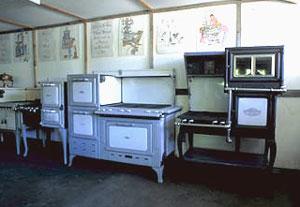With all of the new talk about obtaining jet fuel from coal (h/t, Classical Values), it's a good time to review the subject of Town Gas.
 At the turn of the century, every town in America had a Gas Works, generally adjacent to, but on the wrong side of, the train tracks.
At the turn of the century, every town in America had a Gas Works, generally adjacent to, but on the wrong side of, the train tracks.
As the local Gas Works, coal was heated under low-oxygen conditions, producing a synthetic gas which lit town lamps since around 1800, and later stoves and heat. This gas - "synthetic gas" or "coal gas" - was mainly CH4 (methane).
"Town Gas" lit the streetlights and indoor lamps of America until electrification.
The chemist Bergius received a Nobel Prize in 1931 for creating a high-pressure efficient method of coal gasification and the production of liquid fuels from coal. There was worry, at that time, about the imminent depletion of petroleum resources.
"Natural" gas, from petroleum wells, did not become available in the US until after WW2, when the gas pipelines began construction. Prior to that time, the gas was burned off at the wellhead. Natural gas is a mix of varying-length carbon-hydrogen compounds. Today, the longer carbon chain compounds are extracted (eg propane) and sold as pressurized liquid gas, leaving the smaller chain compounds to the pipelines - mainly methane and ethane.
A neat little history of the gas business in a Connecticut town here. Basic chemistry of these compounds and prcesses here.
Image: circa 1920 gas ranges. Gas ranges began to appear at the turn of the century, replacing cooking with wood, coal and charcoal. Hence the expression "Now we're cooking with gas."


 At the turn of the century, every town in America had a Gas Works, generally adjacent to, but on the wrong side of, the train tracks.
At the turn of the century, every town in America had a Gas Works, generally adjacent to, but on the wrong side of, the train tracks.